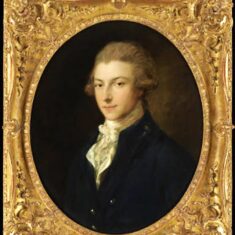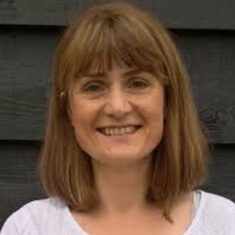In 2017, an important painting returned to Knole to hang in the Reynolds Room. Here is the story behind how the National Trust acquired Gainsborough’s fine portrait of Louis-Pierre Quentin de Richebourg, marquis de Champcenetz at a Sotheby’s auction in New York in January 2016. Thanks to interviews with three key Trust staff who shared their behind-the-scenes memories, we can re-live the excitement of discovering the Gainsborough was for sale, and the exhilaration of a midnight auction which ended with the return of the marquis to the home for which his portrait was commissioned.
Acquiring Gainsborough's portrait of the marquis de Champcenetz
Behind the scenes of a thrilling 2016 auction
Interviews by Veronica Walker-Smith
Spotting the Gainsborough on a Friday night (John Chu)
“I was just scrolling through the Sale on the Friday night, it was about 9 o’clock or 10 o’clock on the Friday night before the Sale, because it’s kind of what you do as a Curator is that you take an interest in major sales that are going through and you look at provenances and my particular area is 18th century British painting. And I just thought, I noticed there was a Gainsborough: if there is a Gainsborough I will look into it and it had a provenance in Knole which surprised me because I thought I knew all the Reynoldses and Gainsboroughs that had been at Knole. But this one somehow, I just never noticed, it just wasn’t on my radar. And I thought, ‘Well that’s strange,’ because we have software within the National Trust which picks up automatically any work of art that comes through the Sales with a provenance of one in our Collections.
It was known to be a Knole picture because of being, you know the provenance was rock solid throughout the 20th century: so it was sold in 1930 and that it passed through private and public collections until 2016 so it was always known as a ‘Knole picture’.”
Writing the Statement of Significance (John Chu)
“Emma pulled together the official form so: the details that they need to know from the point of view of price; valuation and significance, and I prepared a longer page and a half Statement of Significance about why this was an important painting for Knole and you know the kinds of how it fed into our strategy. So the whole National Trust’s thinking on curatorship at the moment needs to be, everything we do needs to feed into that thinking or that ambition.
It was really exciting because there was no space for procrastination. So it felt, you know, like filing copy, like for a newspaper for example (laughing). It was a challenging deadline but … there was excitement about it because it’s a Gainsborough and because it’s beautiful and the biography was fascinating. So there was a kind of buzz around it so actually to be writing this thing was a real pleasure actually.”
Checking the archives for proof of public display (Emma Slocombe)
“In making an acquisition… it isn’t just about returning a high quality work of art back to a house, but it is also then the future life of that object and how our visitors engage with it and, if it was never on public display, it is much harder then to make the case for returning an object, particularly in a house with a very long history, a known history, of display because where would you put a painting that didn’t fit in with those patterns?
So I had a look in the archives and I found that he had been displayed for quite a long period of time in the Venetian Dressing Room which was, until the 1890s, a room very densely hung with a number of paintings, some of which now are in the private collection here.
And frustratingly I had a photograph of the Venetian Dressing Room with every wall shown on it, so I could see the picture hang apart from the wall where this particular painting was hanging! So, although I managed to connect it to the house and I discovered that it had then subsequently been displayed in the Reynolds Room, unusually for Knole that wasn’t documented in an historic photograph. But we felt that actually because it had been on the ‘show’ side of the house for such a long period of time, that we could justify the acquisition.”
One hour to write the Board paper (Emma Slocombe)
“And then Hannah Kay and I wrote a paper that had to go to our Director-General to state the case for this; to itemise the external funding we’d already secured; and to get a pledge from the Trust essentially to release us enough money to enable us to bid at auction and throughout all of this, Emile was in the background having all of the conversations with auction houses; all the technical organisation that goes into putting a bid together and it was thrilling and terrifying and exhausting; but mostly thrilling.
And with the paper that Hannah and I co-wrote together we had, I think, an hour to write it, send it off to Heelis where it was going to be printed off and put in front of our Board of Trustees who had to approve it. And normally you’d spend weeks on these things and it was amazing that John sent us his Statement, that David Taylor, our Curator of Pictures and Sculpture, for whom John works, also did a lot of advocacy for us at the Centre. We were talking to Simon Murray, who was our Deputy Director, who oversees this kind of thing; we got his support and he was amazing at Heelis because as soon as we printed this paper, published this paper, we didn’t even have time to check our spellings, Veronica!
And we sent it off to the Centre, it was printed out by him and he ensured at his end that he just went round and got all the approvals. And that was a moment because we had to write that so quickly, I could barely type and so I had Hannah next to me saying, “We can do this,” and I was in a panic because I was thinking ‘I can’t write this quickly. I am a thoughtful, considered person, you’re asking me to write this paper, it’s got to be right, I’ve got no…’ And she was just: “Right, let’s do this together,” and that’s what we did: heads down, we did it. And it was amazing and as soon as we posted it off, about an hour later the individual approvals for all of the people who sign off the money for acquisitions, started dropping into our inbox. It was amazing.”
The adrenalin rush on auction night (Emma Slocombe)
“The adrenalin rush you get from pursuing an acquisition like this, is something else and it’s exciting. But actually most of the time when you are chasing things at auction, the National Trust is the under-bidder and we don’t get things because there are other institutions, particularly in America, that have more money or there might be a private collector who has a gap in their collection and they want to fill it.
And certainly with this Gainsborough, and you remarked on how handsome it is, it’s a very, very fine portrait by Gainsborough of somebody who is quite good-looking from a period in French history which is romantic and dramatic because obviously the back-drop of his life is the French Revolution. So, there were a lot of things that could have come into play there.
But also, on the night of the auction, it snowed in New York and we did wonder whether the poor weather put a few people, who might have dropped in, off. But you can only speculate at the attendances at an auction but it seemed romantic at the time when we had got to a point when we could bid for this, that Emile [de Bruijn, Registrar in the Curation and Experience Directorate of the NT] and I were sitting up in England in our pyjamas waiting for the Lot to come up as the snowflakes fell in New York. It’s quite romantic, isn’t it?!”
Reflecting on the significance of this purchase (Hannah Kay)
“It’s really exciting, it’s a joy to see the portrait back here. The portrait itself is beautiful. It’s beautifully painted, the canvas is in really, really great condition. You can focus in on his face, his features, his costume, what he’s wearing but I think the really lovely thing is to know he once hung at Knole and he’s back here, he’s going to hang again in the Reynolds Room, the same place where he hung before and also just to look into his eyes and to see his face and to know that he was a friend, a contemporary of the 3rd Duke. The portrait was commissioned by him to hang here. It brings back that period of Knole’s history to life a little.
When the hammer fell, it must have been such a great relief.
[H.K.]: It really was. After 48 hours of such frantic work for all of those involved and there are a great number of people that were involved and helped to secure it, it was a real relief having got the money we suddenly thought, ‘Actually, yes, we still have to successfully purchase it!’
I don’t think the Trust has bought a painting in a long, long time?
[H.K.]: No, no you’re right. No, the National Trust haven’t invested in a painting in this way, in this nature, for a very, very long time. But that adds to the story, it shows the significance of this, the opportunity to find a painting that comes up at auction – from private sale, from private ownership – that means so much to a property, that helps to tell the story of a property in the 1940s when the National Trust took ownership of Knole. Obviously it was a time of great flux and change and some collections were sold and lost to Knole as part of the story. I think that everybody involved saw the opportunity to restore a painting back to the property and fill a gap and help tell a story of Knole’s history.”










No Comments
Add a comment about this page